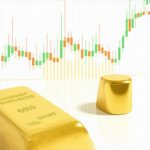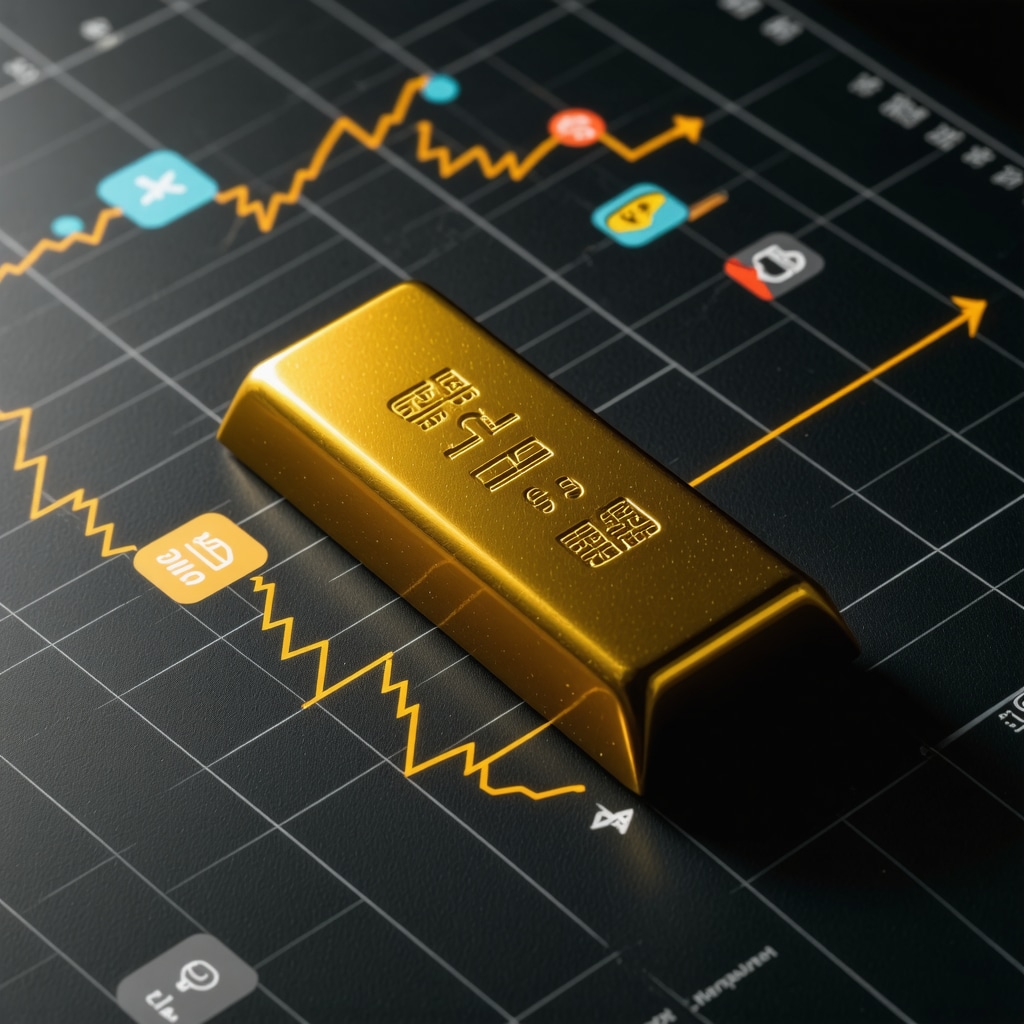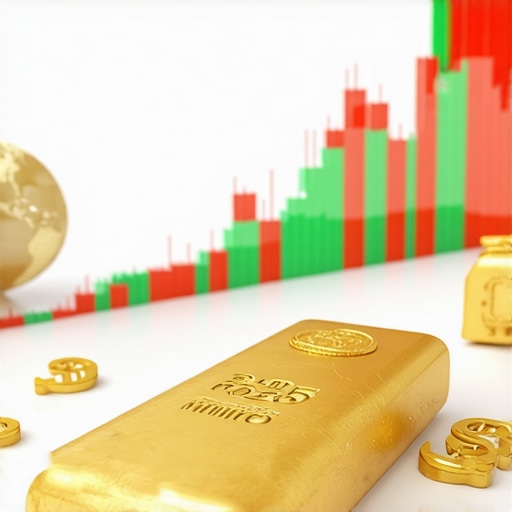Unlocking the Mysteries of Gold Demand: Why It Matters to Investors
Gold has long been revered not just for its beauty but as a strategic asset in investment portfolios. Yet, the true art of investing in gold lies in understanding the intricate demand trends that shape its market value. In an era where global economic landscapes shift unpredictably, discerning these patterns offers savvy investors a crucial edge. This article dives deep into the dynamics driving gold demand, revealing insights to empower smarter investment decisions in 2025 and beyond.
Exploring the Forces Behind Global Gold Demand
Gold demand is a multifaceted phenomenon influenced by diverse factors ranging from geopolitical tensions to technological advances. Emerging markets, particularly in Asia, continue to fuel consumption through cultural affinity and rising wealth, while central banks worldwide adjust their reserves to hedge against currency volatility. Additionally, the role of jewelry fabrication, industrial applications, and investment vehicles like ETFs and futures contracts intertwine to create a complex supply-demand tapestry. Recognizing these drivers is essential for anticipating price movements and capitalizing on market opportunities.
How Do Geopolitical and Economic Uncertainties Shape Gold Demand?
Historical data and recent trends confirm that gold often serves as a safe haven during times of uncertainty. Economic downturns, inflationary pressures, and political instability tend to increase investor appetite for gold, bolstering demand and consequently prices. For instance, during periods of heightened tensions or market volatility, many investors pivot to physical gold and gold-backed instruments as a defensive asset. This behavior underscores gold’s unique role in portfolio diversification and risk mitigation strategies.
Regional Demand Nuances: The Asian Influence and Beyond
Asia’s burgeoning middle class, especially in countries like China and India, continues to drive significant gold consumption primarily through jewelry and investment bars. Cultural traditions and festivals often spur seasonal spikes in demand, which savvy investors monitor closely. Simultaneously, Western markets show nuanced shifts towards ETFs and gold mining stocks, reflecting evolving investment preferences. Understanding these regional demand subtleties enables investors to tailor strategies with precision.
Integrating Demand Trends into Your Investment Strategy
Smart investing in gold transcends mere speculation on price movements; it requires a holistic grasp of demand trends aligned with macroeconomic indicators. Combining insights on supply constraints, central bank policies, and consumer behavior can guide timing and allocation decisions effectively. Investors contemplating diversification might explore physical gold holdings alongside ETFs or mining stocks to balance liquidity and growth potential.
For those interested in a comprehensive exploration of understanding global gold demand trends, this resource offers an in-depth analysis of market forces shaping the gold landscape.
What has been your experience with gold investments during periods of economic uncertainty? Share your insights or questions in the comments below to join the conversation and learn from fellow investors.
To further deepen your expertise, consider visiting the World Gold Council’s authoritative reports on gold demand and supply dynamics here.
Central Banks and Their Strategic Gold Moves: A Closer Examination
Central banks have increasingly become pivotal players in the global gold demand landscape. Their purchases often signal intentions to diversify reserves away from fiat currencies, especially amid fears of currency devaluation or geopolitical instability. Recent years have witnessed emerging economies like Russia and China aggressively boosting their gold reserves, influencing global supply dynamics and price trajectories. Investors tracking these trends can better anticipate shifts in gold’s market sentiment and potential price spikes.
Moreover, central banks’ gold buying patterns reflect broader monetary policy shifts and confidence in economic stability. For instance, during periods of quantitative easing or low interest rates, gold tends to gain appeal as a non-yielding asset that preserves wealth, contrasting the depreciating fiat currencies. This nuanced understanding enhances an investor’s ability to align gold investments with macroeconomic cycles effectively.
Supply Constraints: How Mining and Recycling Affect Gold Availability
Gold supply is not infinite, and its constraints critically shape price dynamics. Mining output, which constitutes the primary source of new gold, faces challenges such as resource depletion, increasing extraction costs, and regulatory hurdles. These factors can limit supply growth, tightening the market especially when demand surges.
Additionally, recycling of gold from scrap jewelry and electronics contributes to supply but fluctuates based on gold prices and economic conditions. High prices typically incentivize more recycling, partially alleviating supply pressure. Investors who grasp these supply-side intricacies can better interpret short- and medium-term price movements beyond mere demand signals.
How Can Investors Leverage Gold Demand and Supply Insights for Portfolio Optimization?
Understanding the interplay between demand drivers — such as geopolitical instability, consumer behavior, and central bank policies — and supply-side factors enables investors to craft more resilient portfolios. For example, during anticipated periods of increased geopolitical tension, allocating a higher proportion to physical gold or gold ETFs might offer downside protection. Conversely, in stable economic phases with rising interest rates, exposure to gold mining stocks could capitalize on operational leverage and dividend income.
Incorporating these insights requires continuous market monitoring and strategic timing. Tools like gold futures market analysis provide sophisticated mechanisms for hedging and speculative plays aligned with demand-supply forecasts. Similarly, reviewing gold IRA investment options can help secure long-term wealth through tax-advantaged accounts backed by physical gold assets.
Expanding your expertise with authoritative sources like the World Gold Council ensures you stay updated on evolving global trends and investment strategies.
Have you adjusted your gold investment strategy based on emerging demand or supply trends? Share your experiences or questions below to foster a richer investor dialogue.
Decoding Gold Price Volatility: Insights from Market Microstructure and Behavioral Economics
The volatility of gold prices extends beyond traditional supply and demand curves, influenced significantly by market microstructure factors and investor psychology. High-frequency trading algorithms, liquidity constraints during geopolitical events, and herd behavior can amplify short-term price swings. Understanding how order book dynamics and trading volumes interact with macroeconomic news releases enables investors to anticipate and potentially exploit transient dislocations in gold pricing.
Behavioral biases such as loss aversion and overconfidence often drive sudden surges or drops in gold demand, especially in retail segments. Institutional investors, meanwhile, may adjust positions based on complex models predicting inflation trajectories or central bank actions. Integrating these behavioral and structural factors into investment frameworks allows for more nuanced risk management and timing strategies beyond classical fundamental analysis.
What Role Do Derivatives and Synthetic Gold Instruments Play in Shaping Demand and Price Discovery?
Derivatives like gold futures, options, and exchange-traded products (ETPs) have revolutionized how gold exposure is obtained, impacting both demand patterns and price discovery mechanisms. These instruments provide leverage, hedging possibilities, and access to gold without physical ownership, which can decouple spot demand from investment flows.
Yet, the proliferation of synthetic gold ETFs and unallocated gold accounts introduces counterparty risks and potential systemic vulnerabilities. During periods of stress, such as the 2008 financial crisis or the COVID-19 market turmoil, liquidity mismatches and margin calls in derivatives markets have triggered rapid price corrections. Savvy investors must therefore assess the underlying asset backing and counterparty exposure of gold investment vehicles, balancing liquidity benefits with risk considerations.
Moreover, derivative markets often lead spot prices, reflecting anticipations of future supply-demand imbalances and macroeconomic shifts. This anticipatory quality can be harnessed through advanced analytics and sentiment analysis to enhance entry and exit timing in gold portfolios.
Technological Disruptions and Their Impact on Gold Supply Chains and Market Transparency
Emerging technologies such as blockchain, advanced data analytics, and artificial intelligence are increasingly shaping the gold industry’s supply chain transparency and market efficiency. Blockchain-based platforms facilitate traceability of gold provenance, combating issues like conflict minerals and enhancing ethical sourcing credentials — factors that are increasingly valued by institutional investors adhering to ESG principles.
AI-driven predictive analytics enable mining companies to optimize extraction processes, anticipate equipment failures, and reduce operational costs, potentially increasing mine output sustainably. These technological innovations not only affect supply-side dynamics but also influence investor confidence in the gold market’s integrity and stability.
Furthermore, enhanced data transparency supports more accurate market sentiment models and price forecasting, empowering investors with real-time insights that were previously inaccessible. This technological evolution underscores a paradigm shift where gold investment strategies must integrate data science capabilities alongside traditional financial analysis.
Environmental, Social, and Governance (ESG) Considerations: The New Frontier in Gold Investing
The rising prominence of ESG factors is reshaping gold demand, particularly among institutional investors and sovereign wealth funds. Environmentally responsible mining practices, social impact on local communities, and governance standards are now integral to assessing gold’s long-term value proposition.
Gold producers who adopt sustainable extraction techniques and transparent reporting frameworks are increasingly favored, influencing capital flows and market valuations. Conversely, concerns over ecological degradation or labor practices can trigger divestment and reputational risks. Investors incorporating ESG criteria must therefore engage in rigorous due diligence, leveraging third-party certifications and sustainability reports to align portfolios with ethical standards.
This ESG integration extends to recycled gold markets, where traceability and certification bolster demand for responsibly sourced recycled metals. As regulatory frameworks evolve globally, compliance with ESG mandates is becoming both a risk mitigation strategy and a competitive advantage in gold investment.
For in-depth ESG analytics on gold mining companies, refer to the Sustainalytics ESG Ratings, a leading provider of environmental and social risk assessments.
Have you integrated ESG considerations into your gold investment approach? Share your strategies or questions below to enrich the community dialogue.
Advanced Portfolio Construction: Balancing Gold Exposure with Macro Hedging and Alternative Assets
Incorporating gold into a diversified portfolio requires sophisticated balancing with other asset classes to optimize risk-adjusted returns. Beyond its traditional role as a hedge against inflation and currency devaluation, gold can complement alternative investments like real estate, commodities, and private equity, enhancing portfolio resilience during economic cycles.
Techniques such as mean-variance optimization, factor analysis, and scenario stress testing facilitate quantifying gold’s incremental contribution to diversification. Additionally, tactical allocation adjustments based on macroeconomic indicators—such as real interest rates, monetary policy shifts, and geopolitical risk indices—can refine exposure timing.
Dynamic portfolio rebalancing, incorporating both physical gold and derivatives exposure, allows for capturing upside potential while mitigating downside. This multidimensional strategy requires continuous market intelligence and access to sophisticated analytical tools.
For a deeper dive into quantitative gold portfolio modeling, consider exploring resources like the CFA Institute’s research on commodity portfolio integration (CFA Institute Commodity Diversification Research).
Harnessing Behavioral Finance to Decode Gold Market Anomalies
While fundamental factors often guide gold valuation, behavioral finance provides a critical lens to understand anomalous market movements. Cognitive biases such as anchoring, framing, and herd mentality significantly influence buying and selling behaviors, creating deviations from traditional price expectations. Institutional investors leveraging sentiment analysis and neurofinance research can uncover latent demand surges, enabling tactical positioning ahead of market shifts.
For example, during periods of prolonged low volatility, complacency may reduce gold allocation despite looming macro risks. Contrarily, sudden fear spikes can trigger overreactions, as evidenced in flash crashes or rapid rallies. Integrating behavioral insights with quantitative models improves the predictive accuracy of gold price trajectories and mitigates susceptibility to market noise.
Decentralized Finance (DeFi) and Tokenized Gold: Revolutionizing Accessibility and Liquidity
The advent of decentralized finance platforms and tokenized gold assets on blockchain networks has transformed traditional gold investment paradigms. Tokenization enables fractional ownership of physical gold, democratizing access and enhancing liquidity across global markets. Moreover, smart contracts facilitate automated settlement, lending, and collateralization, reducing counterparty risks associated with conventional gold derivatives.
However, investors must scrutinize the regulatory landscape and custodial frameworks governing tokenized gold to avoid systemic pitfalls. The intersection of digital innovation and gold investment demands a nuanced understanding of fintech protocols and cybersecurity measures to safeguard asset integrity.

What Advanced Analytical Techniques Are Best Suited for Forecasting Gold Demand in Complex Market Environments?
Forecasting gold demand amidst multifactorial global influences requires sophisticated analytical methodologies. Techniques such as machine learning algorithms, including random forests and neural networks, integrate vast datasets encompassing macroeconomic indicators, geopolitical events, and social media sentiment. These models outperform traditional econometric approaches by capturing nonlinear relationships and dynamic interactions.
Additionally, scenario analysis combined with Monte Carlo simulations provides probabilistic demand forecasts under varying economic and policy conditions. Employing natural language processing (NLP) tools to parse geopolitical discourse and central bank communications further refines predictive accuracy.
Investors utilizing these advanced analytics gain a strategic advantage by anticipating shifts in gold demand with greater precision, enabling proactive portfolio adjustments.
Leveraging Authoritative Intelligence: Insights from the World Gold Council
To substantiate investment decisions with empirical rigor, the World Gold Council’s Gold Demand Trends reports offer unparalleled depth in data coverage and market analysis. These reports provide granular breakdowns of sectoral demand, regional consumption patterns, and supply chain developments, enriched with expert commentary and forward-looking projections.
Regularly engaging with such authoritative resources ensures investors remain abreast of evolving market dynamics and regulatory shifts, underpinning a research-driven investment approach.
Explore these advanced perspectives to elevate your gold investment strategy today. Engage with our expert community and share your insights or inquiries to foster a robust dialogue on mastering gold demand intricacies.
Frequently Asked Questions (FAQ)
What factors primarily drive global gold demand?
Global gold demand is influenced by a combination of cultural preferences, economic conditions, geopolitical tensions, central bank policies, and investment trends. Emerging markets like China and India significantly contribute through jewelry and investment bars, while Western markets often focus on ETFs and mining stocks. Additionally, supply constraints, recycling rates, and technological innovations also shape demand dynamics.
How do geopolitical events affect gold prices and demand?
Geopolitical uncertainties often increase gold’s appeal as a safe haven asset. During crises or political instability, investors tend to allocate more towards physical gold and gold-backed instruments, driving up demand and prices. This behavior underscores gold’s role in portfolio diversification and risk mitigation during turbulent times.
Can investing in gold derivatives pose risks compared to physical gold?
Yes. While gold derivatives like futures, options, and synthetic ETFs offer liquidity and leverage, they carry counterparty and systemic risks, especially during market stress. Unlike physical gold, derivatives may expose investors to margin calls, liquidity squeezes, and price dislocations. Assessing the backing and custodial integrity of such instruments is essential for risk management.
How do ESG (Environmental, Social, and Governance) factors influence gold investing?
ESG considerations are increasingly shaping investor preferences and capital flows in gold markets. Responsible mining practices, ethical sourcing, and transparent governance enhance a producer’s market reputation and valuation. Investors integrating ESG criteria often seek certified sustainable gold and recycled metals to align portfolios with evolving regulatory and social expectations.
What role do central banks play in shaping gold demand?
Central banks influence gold demand by adjusting reserves to diversify away from fiat currencies and hedge against inflation or currency risks. Their strategic purchases or sales can signal economic confidence or caution, affecting market sentiment and price trajectories. Emerging economies like Russia and China have notably increased gold reserves in recent years, impacting global supply-demand balances.
How can advanced analytics improve forecasting of gold demand?
Techniques like machine learning, neural networks, and natural language processing enable integration of vast, complex datasets—including macroeconomic indicators, geopolitical events, and sentiment analysis—providing more accurate and dynamic demand forecasts. Scenario-based simulations and probabilistic models further enhance predictive precision, supporting proactive investment strategies.
What are the implications of technological innovations on gold supply chains?
Blockchain and AI technologies enhance supply chain transparency, ethical sourcing verification, and operational efficiency in mining. These improvements increase investor confidence by reducing risks related to conflict minerals and environmental impact while potentially optimizing mine output and lowering costs, thereby influencing supply dynamics and market stability.
How does behavioral finance explain gold market anomalies?
Behavioral biases such as herd mentality, loss aversion, and overconfidence cause deviations from fundamental price expectations, resulting in sudden surges or declines. Understanding these psychological factors helps investors anticipate market overreactions or complacency phases, improving timing and risk management beyond traditional analysis.
What benefits do tokenized gold and DeFi platforms offer investors?
Tokenized gold via blockchain enables fractional ownership, enhancing accessibility and liquidity globally. DeFi platforms automate transactions with smart contracts, reducing counterparty risks and enabling innovative financial functions like lending and collateralization. However, regulatory clarity and custodial security remain critical considerations for investors.
How should gold be integrated into a diversified investment portfolio?
Effective portfolio construction balances gold exposure with other asset classes to optimize risk-adjusted returns. Using quantitative methods such as mean-variance optimization and scenario testing helps determine tactical allocations aligned with macroeconomic trends. Combining physical gold, derivatives, and alternative assets can enhance diversification and hedge against inflation or geopolitical risks.
Trusted External Sources
- World Gold Council (WGC): The preeminent authority on gold market data and analysis, providing comprehensive reports on demand trends, supply dynamics, and investment strategies essential for informed decision-making.
- CFA Institute: Offers rigorous research and quantitative methodologies for integrating commodities like gold into diversified portfolios, valuable for advanced investment modeling and risk assessment.
- Sustainalytics: A leading ESG rating agency that supplies detailed environmental, social, and governance risk evaluations of gold mining companies, guiding responsible investment decisions.
- International Monetary Fund (IMF): Provides macroeconomic data and analysis on central bank reserve policies and global economic indicators impacting gold demand and price volatility.
- Journal of Behavioral Finance: Publishes peer-reviewed studies on investor psychology and market anomalies, enhancing understanding of behavioral influences in gold markets.
Conclusion
Understanding global gold demand trends is vital for crafting resilient and profitable investment strategies in today’s complex economic landscape. This article has illuminated how multifaceted factors—from geopolitical instability, central bank actions, and regional consumption patterns to technological innovations and behavioral finance—intertwine to shape gold’s market dynamics. Recognizing the nuanced roles of supply constraints, ESG considerations, and emerging digital platforms empowers investors to navigate volatility and seize opportunities with precision.
By integrating advanced analytics and authoritative intelligence from trusted sources like the World Gold Council, investors can anticipate demand shifts and optimize portfolio allocations effectively. Whether through physical holdings, derivatives, or tokenized assets, mastering these insights fosters strategic agility and long-term wealth preservation.
Engage with this knowledge by sharing your experiences, commenting below, and exploring related expert content to elevate your gold investment acumen in 2025 and beyond.











The article’s exploration of how geopolitical and economic uncertainties drive gold demand really resonated with me. I’ve been tracking gold investments through recent market volatilities, and I’ve noticed that during sudden geopolitical tensions, there’s a swift pivot toward physical gold and ETFs, just as described. What I find intriguing is how regional demand nuances, especially in Asia, introduce seasonal fluctuations tied to cultural factors, which most casual investors might overlook. Personally, aligning my investment timing with these patterns has helped mitigate some risks during unstable periods. However, integrating these complex demand trends into a strategy remains challenging—especially balancing between physical holdings and derivative instruments amid varying supply constraints. The discussion on central banks’ strategic moves further highlights how macroeconomic signals influence gold’s appeal. I’m curious how other investors are navigating the increasing role of technology and ESG considerations in gold investing. Are there practical ways you’ve integrated these factors without sacrificing returns? Additionally, how do you balance the traditional safe haven role of gold with these emerging complexities in portfolio diversification? Looking forward to learning from the community’s experiences!